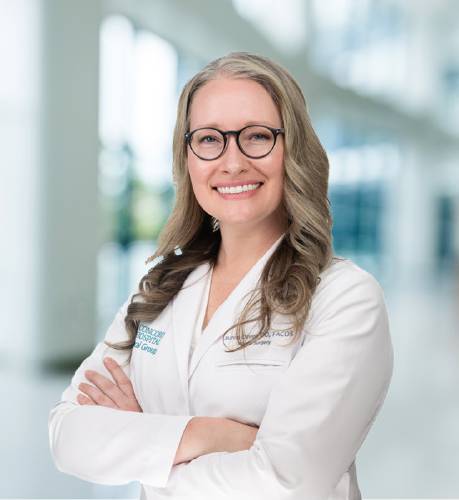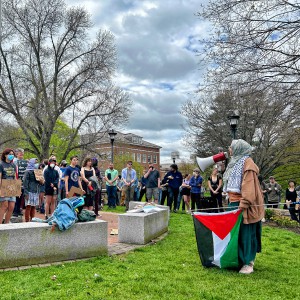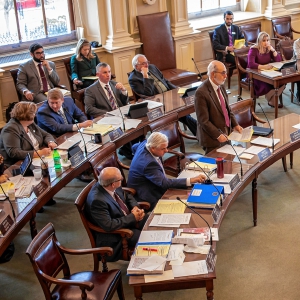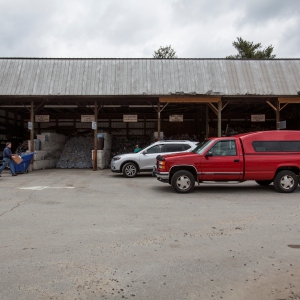Ask a doctor: Plastic surgery care of breast cancer patients

Dr. Lauren Oliver, DO, FACOS
| Published: 01-07-2024 11:00 AM |
Dr. Lauren Oliver, DO, FACOS, plastic and reconstructive surgeon at Concord Hospital Plastic Surgery, discusses the care given to breast cancer patients using the latest in cosmetic surgical techniques. “Our field is always advancing, which is why we like to meet with our patients yearly, so we can offer new treatment options as concerns arise,” says Dr. Oliver.
Plastic surgeons can become involved in the initial breast reconstruction phase following a lumpectomy, mastectomy, axillary lymph node dissection, or loss of sensation. There is ongoing reconstruction where a plastic surgeon will enhance the appearance of the breast after a patient has healed from initial surgery. In addition, plastic surgeons often perform symmetry surgery to improve the evenness of the breast from one side to the other, autologous reconstruction which enables a patient to use their own tissue for reconstruction, as well as ongoing lymphedema treatment.
A lumpectomy involves the removal of a tumor from the breast with the remaining portion left intact. Most patients who receive a lumpectomy will need radiation to treat the remaining breast tissue. Typically, this will occur six to eight weeks after the cancer is surgically removed. Once radiation is given, the internal breast tissue will not heal well with subsequent surgery. Therefore, if a change is desired in a breast’s appearance, it should be done at the same time as the lumpectomy.
There are cases where breast cancer treatment may involve removing both breasts from a patient. This surgical technique is called a mastectomy. Once the breast has been removed, there are options available to fill the area where it was located.
An implant is an option that is inserted to replace the volume removed during a breast mastectomy. An implant consists of smooth round silicone gel. The newest generation of silicone gel implants are more robust and do not leak silicone fluid, if ruptured. They work well for the majority of patients and are much safer than the older generation of silicone gel implants.
There is another mastectomy option called goldilocks. This technique can be used in patients with large breasts who prefer not to have implants or other forms of breast reconstruction surgery. Goldilocks uses excess skin to form a petite breast mound, which helps avoid concavity that women may have without any breast reconstruction surgery.
Another option, aesthetic flat closure, is a great choice for women who are unable to tolerate implants or do not want them, or prefer not to have reconstructive surgery using their own breast tissue.
There is a technique called nipple sparing mastectomy that is used to treat the sensory nerves in the breast. These nerves are extracted with breast tissue at the time of a mastectomy. In patients with smaller breasts, those nerves can be grafted back to the nipple, if the nipple is preserved. There is a surgical technique called Resensation ® that is designed to restore nipple sensation. Using this technique, a plastic surgeon will take a donated nerve graft from a human source and graft it to the nerve that feeds the nipple to restore sensation. It is important to note that this is not instantaneous. It will take a period of time for sensation to occur and it has great efficacy.
Article continues after...
Yesterday's Most Read Articles
 UNH faculty and students call on university police chief to resign following his alleged assault on a student
UNH faculty and students call on university police chief to resign following his alleged assault on a student
 Steeplegate project to reopen to public comment as developer seeks to reduce required parking
Steeplegate project to reopen to public comment as developer seeks to reduce required parking
 Opinion: NH should support SB 553
Opinion: NH should support SB 553
 A turbulent 50-year history: Inside the rise and fall of a tiny Catholic college in Warner
A turbulent 50-year history: Inside the rise and fall of a tiny Catholic college in Warner
 Hopkinton tries to nab out-of-town trash bandits
Hopkinton tries to nab out-of-town trash bandits
 Lawyers and lawmakers assert the Department of Education is on the verge of violating the law
Lawyers and lawmakers assert the Department of Education is on the verge of violating the law
Another advancement in breast reconstructive surgery is LYMPHA, short for lymphatic microsurgical preventative healing surgery. This cutting-edge technique is used to re-route lymphatic vessels (located in the armpit) that are transected at the time of surgery into nearby veins to avoid backflow of lymphatic fluid into the arm known as lymphedema.
Once a patient has healed from surgery, a plastic surgeon will schedule a follow up consultation to discuss options for the other breast. Sometimes this may involve reducing the size or weight of the breast, performing a breast lift, or augment it with an implant to help improve overall symmetry. The reconstructed breast can also be treated simultaneously. For instance, if the breast was treated with a mastectomy, a surgeon can exchange the implant (or tissue expander) for a different implant. Or, if an implant was placed, its position can be changed by adjusting the capsule made by the body around it internally. Oftentimes adding liposuctioned fat to the breast can correct a contour deformity to provide a more natural appearance. In some cases, there are patients that feel it be best served by having the implants removed and exchanged for their own breast tissue. In this scenario, the abdominal tissue could be used, along with the attached blood vessels, and moved up to the chest where blood vessels are connected to those in the chest, enabling a patient’s own donated tissue to be reformed into a breast with blood flowing through it.
Dr. Lauren Oliver, DO, FACOS, recently spoke about the different types of cosmetic surgical techniques used to care for breast cancer patients at a “What’s Up Doc?” presentation hosted by Concord Hospital Trust’s Donor Lecture Series. The monthly series, supported by the Walker Lecture Fund, features members of Concord Hospital’s medical staff speaking to Concord Hospital Trust donors about new and innovative medical treatments and services. You can watch Dr. Oliver’s presentation on Concord Hospital’s YouTube channel at: youtube.com/concordhospital.


 Northeast Coffee Festival comes to Concord this weekend
Northeast Coffee Festival comes to Concord this weekend Henniker Handmade & Homegrown
Henniker Handmade & Homegrown Colonial Theatre Laconia presents Piff the Magic Dragon
Colonial Theatre Laconia presents Piff the Magic Dragon The Loft at Hermit Woods presents Pete Kilpatrick
The Loft at Hermit Woods presents Pete Kilpatrick 
